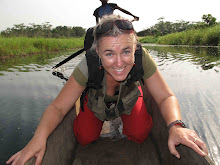16JAN

http://blog.soundslides.com/
From blog.soundslides.com
written by Laura Read
Eva Gilliam’s audio slideshow checklist — Don’t leave home without it!

Editors can only do so much with the material they’re provided. Freelance audio slideshow and video producer Eva Gilliam, who lives in Cape Town, South Africa, and produces videos and audio slideshows for various news agencies and NGOs, likes to provide a checklist to photographers and reporters she works with. One late night on Skype, she shared her list with the Soundslides community. What do you have on your field checklist? Tell us in the comments section below.
Photography strategy
- Develop a rough scripting of the story before you go out: where is it, who are the characters, what are they doing?
- List the shots that will illustrate each step of the story.
- Prepare to photograph the situation from many angles. From each angle, be sure to get wide, medium and extreme close-up images. “Close-ups give you emotion; wide shots give you context,” Gilliam says. The variation between close-up, medium and wide provides overall texture in the audio slideshow.
- Get close-up images of the objects, settings and situations around the subject that can fill out the story in interesting ways.
- Show broader context by getting general wide shots of the place.
Audio recording strategy
- Gather at least two minutes of ambient sound from of each of the main locations.
- Record segments of each interview subject making his or her own introduction. “I always get an introduction of the person saying ‘Hi my name is ####. I’m ### years old and I live in ###,’” Gilliam says. “This has two purposes. One is, I don’t forget to include the person’s name in the slideshow. The second is, I’ve gotten the person’s consent. If they’re giving their name and everything on mic, they’re giving their consent; you don’t need a consent form. It’s also a really nice way to introduce someone in the audio slideshow, to have the person telling you who they are, as opposed to (presenting) a name on a screen.”
- Record some local music if you can. “It can be someone singing on the streets, kids singing at school,” she says. “Find music that matches the story.”
Keep this in mind for sound
- Pay attention to noises in the background of your interview. Make sure they work with the tone and subject of the interview.
- “Protecting that interview sound is important,” Gilliam says. If it’s noisy, “pull someone aside or go behind a building, and watch out for wind or any background noise. Don’t hold the mic so close to the person that you get distortion or pops when the person is speaking.”
- Good recording devices include Moranz or Roland RO5.
Check out more of Eva Gilliam’s audio slideshows and videos at the Children’s Radio Foundation.
For more information on Gilliam, read her blog.
— Interview and story by Laura Read
http://blog.soundslides.com/

No comments:
Post a Comment